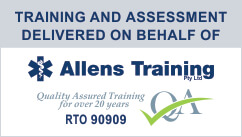Snake Bites and Spider Bites – The Children’s Hospital
Great information for people on the Northern Beaches or in fact anywhere. Can you save a life? Do you have the skills? When was the last time you completed a first aid or CPR course? Book into a First Aid or CPR training course with Simple Instruction today.
This article is taken from http://www.chw.edu.au/poisons/bites_stings.htm . Please support the The Children’s Hospital at Westmead in any way you can.
Snakes
Snake bites in Australia from land or sea snakes can be potentially fatal and you should seek immediate medical assistance for all snake bites. While not all snakes are venomous, it is difficult to reliably identify a snake; hence all snake bites should be treated as being potentially dangerous.
If a snake bite occurs, call 000 or 112 for an ambulance, apply a pressure-immobilisation bandage, and have the patient taken immediately to the nearest hospital. If the person collapses or stops breathing, commence CPR (cardiopulmonary resuscitation).
If you are bitten by a snake keep in mind the following DOs & DON’Ts:
If a person is bitten by a snake:
- DO:
- Remove them from further danger
- Keep them still
- Apply a pressure-immobilisation bandage
- DON’T:
- Panic or run
- Attempt to catch the snake
- Apply a tight tourniquet
- Wash, suck or cut the bite site
Spiders
There are many different types of spiders in Australia that can bite people, and these bites can cause a reaction at the bite site. In Australia the only spiders to cause harm to humans are the Red Back Spider and the Funnel Web Spider.
Red Back Spider
The red back spider is found throughout Australia. The female red back spider has a red/ orange stripe on its back while the male is very small, usually with no stripe and is harmless. A red back spider bite may result in pain, redness and sweating at the bite site.
First Aid:
- Wash the area and keep it clean.
- Seek advice from the Poisons Information Centre or your local doctor.
- If severe pain occurs, take the patient needs to the nearest hospital.
- It is usually not necessary to call an ambulance.
Funnel Web Spider
This spider is large and black. A bite from this spider can be very dangerous. A bite will usually cause severe pain, sweating, nausea and vomiting, difficulty in breathing, muscle twitching and confusion.
First Aid:
- Remove the patient from danger
- Keep the patient still
- Apply a pressure immobilisation bandage around the bite and then bandage the entire limb.
- Use a splint to keep the whole limb still (that is, immobilise the affected limb).
- Call an ambulance (000) to take the person to the nearest hospital.
Please note that white-tail spiders are not venomous and do not cause skin ulcers (necrotic arachnidism). Ref.: Isbister & Gray, Medical Journal of Australia, 2003.
Pressure-Immobilisation Bandage
Pressure-immobilisation is recommended for:
- all Australian snakes, including sea snakes
- funnel web spiders
- bee, wasp and ant stings in allergic individuals
- blue-ringed octopus
- cone shell stings
Do NOT use pressure-immobilisation first aid for:
- spider bites other than a funnel web spider (such as red-back spiders)
- jelly fish stings
- stonefish and other fish stings
- bee, wasp and ant stings in non-allergic individuals
- bites by scorpions, centipedes, beetles
How do apply a pressure-immobilisation bandage
- Call 000
- Keep the person who has been bitten as still as possible. If possible, lie the patient down to prevent walking or moving around.
- Apply a firm bandage over the bitten area (preferably use a crepe bandage if available).

- Then bandage the entire limb (arm to the shoulder or leg to the hip) – the bandage should be as tight as you would apply for a sprained ankle.

- Apply a rigid splint to the limb (piece of wood, branch, or rolled up paper)

- 6. Remembering to keep still await the arrival of the ambulance for transport to the emergency department of the nearest hospital.
Images courtesy of Australian Venom Research Unit, Melbourne.
Marine Animals
Blue bottles
Stings from Physalia species leave a painful whip-like wavy line on the skin from the tentacle. Basic treatment:
- Clear away the tentacles
- Immerse in hot water for 20 minutes for pain relief or have a hot water shower (be mindful to supervise children with hot water)
- Seek medical advice if pain continues.
Tropical Jellyfish
Australian jellyfish are extremely dangerous and can cause death. If someone is stung by a jellyfish:
- Remove the person from water
- Pour vinegar over the affected areas of skin
- Carefully remove any tentacles
- Do NOT apply a pressure immobilisation bandage
- If pain persists transport the person to medical care (or call 000)
- If the person is unconscious or stops breathing, commence CPR (cardiopulmonary resuscitation)
Blue-ringed octopus
The blue-ringed octopus bite is very poisonous. A bite can cause paralysis, and the person may stop breathing. Basic treatment:
- Apply a pressure immobilisation bandage to the entire affected limb
- Call 000 to take the patient to the nearest hospital
- If the person collapses or stops breathing, commence CPR (cardiopulmonary resuscitation).



